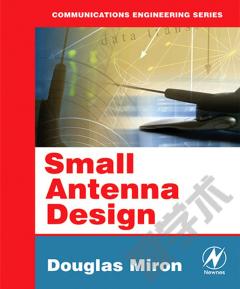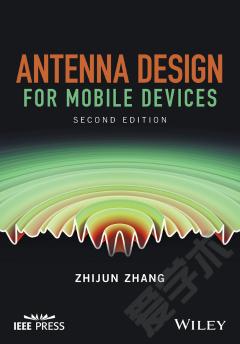Small Antenna Design
Preface Chapter 1: Introduction 1.1 What is Small? 1.2 What are the Problems? 1.3 Some Historical Small Antenna Types and Applications 1.4 Some Present and Future Small Antennas References Chapter 2: Antenna Fundamentals I 2.1 Electromagnetic Waves 2.1.1 Waves in Space 2.1.2 Waves in Transmission Lines 2.1.3 Power in Waves 2.2 Polarization 2.3 The Short Dipole 2.3.1 Radiation Pattern 2.3.2 Circuit Behavior 2.4 The Small Loop 2.4.1 Circuit Behavior 2.5 Directionality, Efficiency, and Gain References Problems Chapter 3: Antenna Fundamentals II 3.1 Bandwidth and Quality Factor, Q 3.2 Impedance Matching and System Efficiency 3.2.1 Narrow-Band Matching 3.2.2 Wideband Matching 3.2.3 System Efficiency 3.3 Reception 3.3.1 Effective Height 3.3.2 Effective Area 3.3.3 Reception Pattern 3.4 Ground Effects 3.4.1 Image Theory 3.4.2 Vertical Dipole Above a Perfect Ground Plane 3.4.3 Horizontal Dipole Above a PEC Plane 3.4.4 Grounded-Source Antennas 3.4.5 Counterpoise 3.4.6 Summary of Ground Effects 3.5 Improvements References Problems Chapter 4: Introduction to Numerical Modeling of Wire Antennas 4.1 General Concepts 4.2 The Mathematical Basics of the Numerical Electromagnetic Code (NEC) 4.2.1 Basis Functions 4.2.2 Applied Field Models 4.2.3 Solving the Integral Equation 4.3 Using NEC in the Command Window 4.4 Modeling Guidelines 4.5 NEC in a Graphical User Interface (GUI) 4.6 Examples from Chapters 2 and 3 4.6.1 The Short Dipole 4.6.2 Small Loop in Free Space 4.6.3 End-Loaded Short Dipole References Problems Chapter 5: Programmed Modeling 5.0 Introduction 5.1 Using Wire-List Generators in NEC 5.2 Using Code to Generate a Wire List Problems Chapter 6: Open-Ended Antennas 6.0 Introduction 6.1 Thick Monopoles 6.1.1 Modeling Thick Monopoles 6.2 Top Loading 6.2.1 The Inverted-L 6.2.2 Top-Loading with Radials 6.2.3 Volume Loading 6.3 Coil Loading 6.4 Using Resonance 6.5 Summary References Problems Chapter 7: Loops and Other Closed-Wire Antennas 7.0 Introduction 7.1 Thick Loops 7.1.1 The Doughnut 7.1.2 The Barrel Loop 7.2 Solenoid Antennas 7.3 The Contrawound Toroidal Helix Antenna (CTHA) 7.4 The Folded Spherical Helix Monopole 7.5 Final Comments References Problems Chapter 8: Receiving Antennas 8.0 Introduction 8.1 External Noise 8.2 The Ferrite Rod Antenna 8.2.1 Antenna Parameters 8.2.2 Circuit Applications 8.3 Active Receiving Antennas References Problems Chapter 9: Measurements 9.1 What are You Measuring? 9.2 Measurements Through a Transmission Line 9.2.1 If I only have an SWR meter... 9.2.2 Impedance Measured Through a Transmission Line 9.3 Ranges and Test Enclosures 9.4 The Wheeler Cap and Variations 9.4.1 Series and Parallel Effects References Problems Appendix A: The Mathematics of Antenna Orientation A.1 Unit-Vector and Coordinate Variable Relations. A.2 The Horizontal Dipole A.3 The Vertical Loop Problems Appendix B: The Parallel-Ray Approximation Problems Appendix C: The Small Loop Problems Appendix D: The Proximity Effect D.1 Current Distribution D.1.1 Problem Formulation and Reduction to a System of Linear Equations D.1.2 Solution for the Current Coefficients D.2 Power and Resistance References Appendix E: What Every EE Student Should Know About Mathematics by the Senior Year E.1 What is Mathematics to an Engineer? E.2 The Process is as Important as the Result E.3 Facts and Idioms E.3.1 Special Numbers E.3.2 Identities and Formulas E.3.3 Approximations E.4 Integrals and Derivatives E.5 Radians or Degrees? E.6 Matrix Notation and Operations E.7 Answers for Section E.3 Index
{{comment.content}}








 京公网安备 11010802027623号
京公网安备 11010802027623号